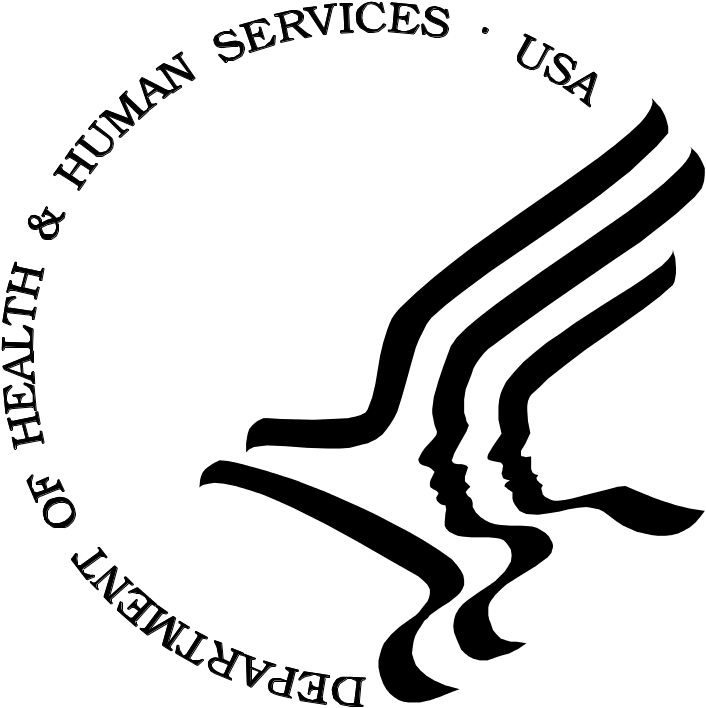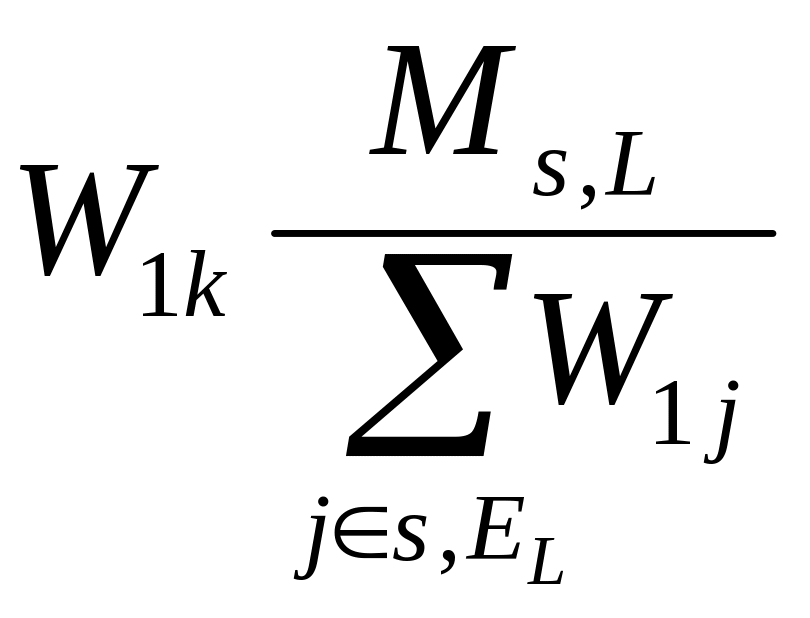Justification for change
SLAITS 2009 OMB_10_day letter sample design change CPO 07_12_10.doc
State and Local Area Integrated Telephone Survey (SLAITS)
Justification for change
OMB: 0920-0406
 DEPARTMENT
OF HEALTH & HUMAN SERVICES Public
Health Service
DEPARTMENT
OF HEALTH & HUMAN SERVICES Public
Health Service
Centers for Disease Control and Prevention
 National
Center for Health Statistics
National
Center for Health Statistics
3311 Toledo Road
Hyattsville, Maryland 20782
July 12, 2010
Margo Schwab, Ph.D.
Office of Management and Budget
725 17th Street, N.W.
Washington, DC 20503
Dear Dr. Schwab:
The staff of the State and Local Area Integrated Telephone Survey mechanism (SLAITS, OMB control number 0920-0406, exp. 04/30/2011) at the National Center for Health Statistics (NCHS) requests approval to implement a sample design change to improve coverage in the 2009 – 2010 National Survey of Children with Special Health Care Needs (NS-CSHCN, OMB No. 0920-0406, module approved 04/28/2009 by OMB). Specifically, we plan to replace a portion of interviews that would be completed using landline telephones with interviews completed using wireless telephones. We would like to start the cell interviews no later than August 1.
Background Information about the Need to Include Cellular Telephone Interviews
The rapid increase in households that use cell telephones exclusively or primarily has raised concerns about coverage bias in surveys conducted using only landline telephones. According to data from the July – December 2009 National Health Interview Survey (NHIS), the percentage of adults and children who live in households with only wireless telephone service continues to increase. Over one-quarter of children (25.9%) live in households with wireless service only1. Additionally, nearly 20% of children live in wireless-mostly households (e.g., those that receive all or nearly all calls on a wireless telephone).
Proposed project: Combining Two Different Sampling Sources for the 2009 – 2010 NS-CSHCN
We plan to include interviews with wireless-mainly and wireless-only households identified by dialing wireless telephone numbers. The sample frame of randomly generated wireless telephone numbers is supplied by the same vendor that provides the survey with the landline frame. In each state and DC, approximately 160 screening interviews and 40 detailed interviews that would have been conducted using the landline frame will now be selected using the wireless frame. Respondent burden will remain unchanged from the original submission.
Our data collection contractor has extensive experience combining and weighting landline and cell-phone sample. For example, the National Household Flu Survey includes both landline and cell-phone samples to contact and interview respondents about flu vaccination adoption. Below we describe how the two sample types will be combined and weighted for the NS-CSHCN.
When combining landline and cell-phone samples, each sample is benchmarked to external control totals. That is, at the state-level, the weights of the landline sample are poststratified to the number of age-eligible children in the universe of landline telephone households, and the weights of the cell-phone sample are poststratified to the number of age-eligible children in the universe of cell-only/cell-mainly households. As the cell-phone sample is screened for cell-only/cell-mainly telephone status, the landline sample and the cell-phone sample represent mutually exclusive segments of the population.
Independent
estimates of the total number of eligible children for each state
will be derived using the most recent American Community Survey
(ACS)/Census data. For a given state s,
let
![]() denote the independent estimate of the number of children in the
state. The state-level proportion of children in landline telephone
households and the proportion of children in cell-only/cell-mostly
households will be obtained from the appropriate NCHS wireless
substitution report.
denote the independent estimate of the number of children in the
state. The state-level proportion of children in landline telephone
households and the proportion of children in cell-only/cell-mostly
households will be obtained from the appropriate NCHS wireless
substitution report.
As described below, the state-level control totals for benchmarking the landline sample will be derived by multiplying the independent estimates of the total number of children and the proportion of children in landline telephone households; the state-level control totals for benchmarking the cell-phone sample will be derived by multiplying the independent estimates of the total number of children and the proportion of children in cell-only/cell-mainly households.
Let
![]() respectively
denote the proportion of children in landline telephone households
and the proportion of children in cell-only/cell-mostly households
for state s.
As we need the state-level cell-only/cell-mainly proportion, we will
adjust the cell-only/cell-mostly proportion using SLAITS data to
derive the state-level cell-only/cell-mainly proportion. Let
respectively
denote the proportion of children in landline telephone households
and the proportion of children in cell-only/cell-mostly households
for state s.
As we need the state-level cell-only/cell-mainly proportion, we will
adjust the cell-only/cell-mostly proportion using SLAITS data to
derive the state-level cell-only/cell-mainly proportion. Let
![]() denote
the national-level adjustment factor derived from SLAITS data for
cell-only/cell-mainly telephone status given cell-only/cell-mostly
telephone status. Then, an estimate for the state-level proportion
for children living in cell-only/cell-mainly households is derived as
follows:
denote
the national-level adjustment factor derived from SLAITS data for
cell-only/cell-mainly telephone status given cell-only/cell-mostly
telephone status. Then, an estimate for the state-level proportion
for children living in cell-only/cell-mainly households is derived as
follows:
![]()
The
weight of the k-th
child in the combined landline and cell-phone sample,![]() ,
is defined as follows:
,
is defined as follows:
![]() =
=
 if
if
![]() ,
i.e., in the landline sample for state s
,
i.e., in the landline sample for state s
=
 if
if
![]() ,
i.e., in the cell-phone sample for state s
,
i.e., in the cell-phone sample for state s
where
![]() is
the weight of the k-th
child from the previous step of weighting,
is
the weight of the k-th
child from the previous step of weighting,
![]()
= the total number of age-eligible children in households with a landline telephone
in state s,
![]()
= the total number of age-eligible children in cell-only/cell-mainly households in
state s.
Questionnaire Changes
Very minor changes will be made to the questionnaire. At the beginning of the call we will need to confirm that respondents are in a safe situation to respond. Wireless respondents will be asked, “Am I speaking to you on your cell phone?”; if the answer is yes, the respondent will be told “If you are currently driving a car or doing any activity that requires your full attention I need to call you back at a later time”, even if the respondent is using a hands-free device. A call back would be scheduled using routine procedures. For classification purposes, it is important to know who uses the cell telephone on which the interview was conducted. This requires a few additional questions. We will operate in accordance with TCPA regulations that prohibit use of autodialers with cell phones. These modifications are shown in Attachment A.
Thank you in advance for considering this request, and we look forward to hearing from you. SLAITS staff members are available to answer any questions you may have.
cc:
M. Moien
M. Daneshvar
S. Perryman
Attachment A
National Survey of Children with
Special Health Care Needs, 2009-2010
Modifications to incorporate wireless telephone interviews
Introduction
INTRO_AUG Hello, my name is _________. I am calling on behalf of the Centers for Disease Control and Prevention. We are doing a national survey [IF RDD_NCCELL_CCELL=2, 3 "on cell phones"] about health services used by children and teenagers (, and I was told that you were the person to talk with about the health of the child or children in your household).
Safety If you are currently driving a car or doing any activity that requires your full attention I need to call you back at a later time.
(1)
CONTINUE [GO TO S1]
(2) R UNABLE TO CONTINUE [GO TO
S_ATTN]
(3) NOT A CELL PHONE [GO TO S1]
For
your safety, we will call you back at another time.
EVEN
IF THE RESPONDENT IS USING A HANDS-FREE DEVICE WHILE DRIVING, YOU
MUST END THE CALL.
(1)
CALL BACK ANOTHER TIME [GO TO
CB1]
(2) CALL BACK AT ANOTHER NUMBER REQUESTED [GO TO
CB1N_WARNING]
(3) WRONG TIME ZONE FOR CELL PHONE [GO
TO CELL_TZ_1]
(4) Go Back to S_WARM
In what time zone would you like to be called?
(1)
ATLANTIC TIME [Change TZ variable to 58 and
GO TO CB1]
(2) EASTERN STANDARD TIME [Change TZ variable to
62 and GO TO CB1]
(3) CENTRAL STANDARD TIME [Change TZ
variable to 65 and GO TO CB1]
(4) STANDARD MOUNTAIN TIME
[Change TZ variable to 69 and GO TO CB1]
(5) US STANDARD
MOUNTAIN TMIE (ARIZONA) [Change TZ variable to 68 & GO TO
CB1]
(6) PACIFIC STANDARD TIME [Change TZ variable to 70
and GO TO CB1]
(7) ALASKAN STANDARD TIME [Change TZ variable
to 71 and GO TO CB1]
(8) HAWAIIAN STANDARD TIME [Change TZ
variable to 72 and GO TO CB1]
(10) Go Back to INTRO_1
[GO TO INTRO_1 ELSE GO TO N_INTRO1]
(12) RESPONDENT
DOESN'T KNOW / KEEP OLD TIME ZONE [GO TO CB1]
(99) Refused to
continue/ hung up [TERMINATE , SET ITS=41]
Classification
Not counting you, how many people in your household regularly use this cell telephone?
NONE
ONE
TWO OR MORE
What kind of service agreement do you have? Do you have a monthly plan with a contract, a monthly plan with no contract, or a prepaid plan?
Monthly plan with a contract (SKIP NEXT Question)
Monthly plan with no contract (SKIP NEXT Question)
Prepaid plan (next question)
Has your cell telephone been without service for 1 week or more during the past 12 months?
(1) YES
(2) NO
Have I reached you today away from home or at home?
[INTERVIEWER NOTE: IF THE RESPONDENT WAS AWAY FROM HOME DURING ANY PART OF THE CALL, THEN CODE AS AWAY FROM HOME.]
Away from home
At home
Next I have some questions about cell phones in your household. In total, how many working cell phones do you and your household members have available for personal use? Please don’t count cell phones that are used exclusively for business purposes, and please include the number we called.
ONE 1
TWO 2
THREE OR MORE 3
DON’T KNOW 77
REFUSED 99
How many of these cell phones do [LIST CHILDREN]'s parents and guardians who live in this household usually use? Please include the number we called.
INTERVIEWER: THE NUMBER WE CALLED IS ASSUMMED TO BE USUALLY USED.
ONE 1
TWO 2
THREE OR MORE 3
DON’T KNOW 77
REFUSED 99
Of all the telephone calls that you and your family receive, are nearly all received on cell phones, nearly all received on regular phones, or some received on cell phones and some received on regular phones?
IF ASKED ABOUT INCLUDING BUSINESS CALLS: Please do not include any business related calls in your answer.
NEARLY ALL RECEIVED ON CELL PHONES .1
NEARLY ALL RECEIVED ON REGULAR
PHONES. 2
SOME RECEIVED ON CELL PHONES AND SOME
RECEIVED ON REGULAR PHONES .3
DON’T KNOW 77
REFUSED 99
1 Blumberg SJ, Luke JV. Wireless substitution: Early release of estimates from the National Health Interview Survey, July-December 2009. National Center for Health Statistics. May 2010. Available from http://www.cdc.gov/nchs/nhis.htm. Accessed May 28, 2010.
| File Type | application/msword |
| File Title | DEPARTMENT OF HEALTH & HUMAN SERVICES |
| Author | krs0 |
| Last Modified By | mxm3 |
| File Modified | 2010-07-12 |
| File Created | 2010-07-12 |
© 2025 OMB.report | Privacy Policy